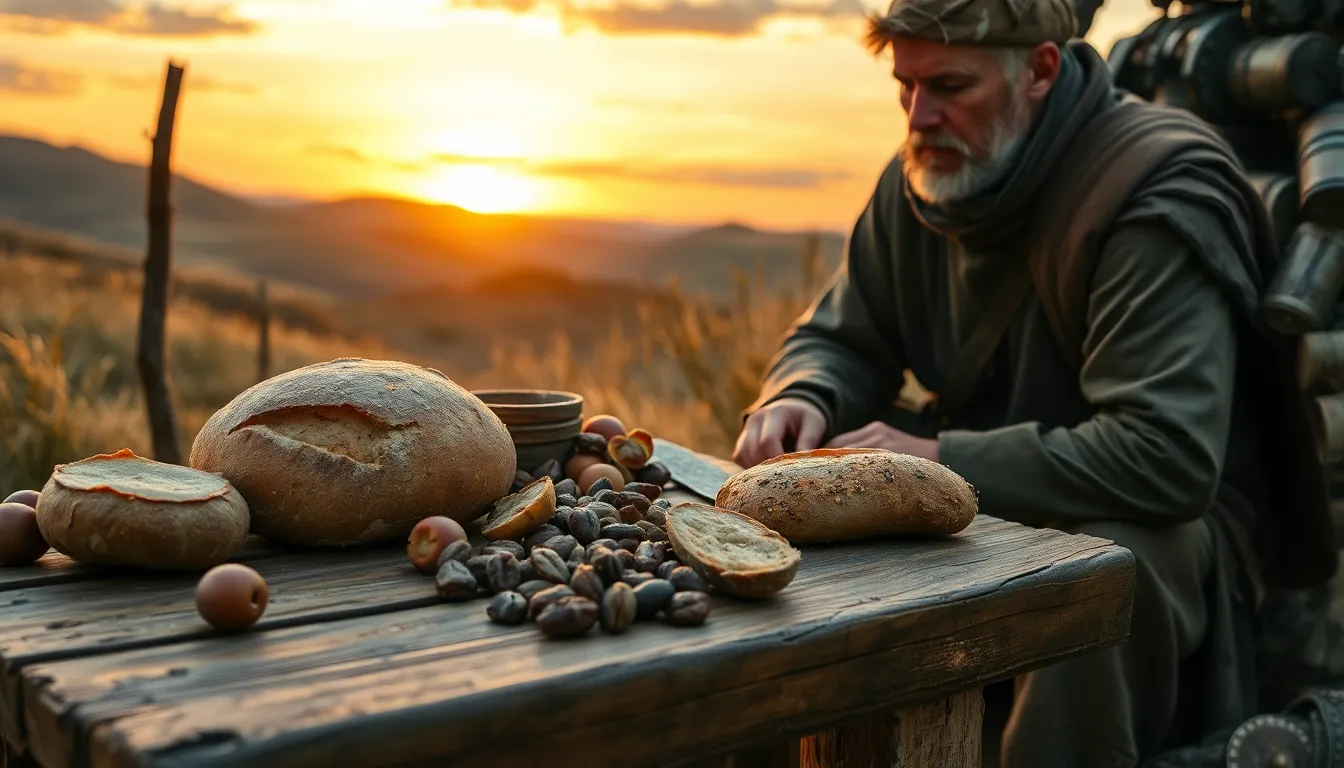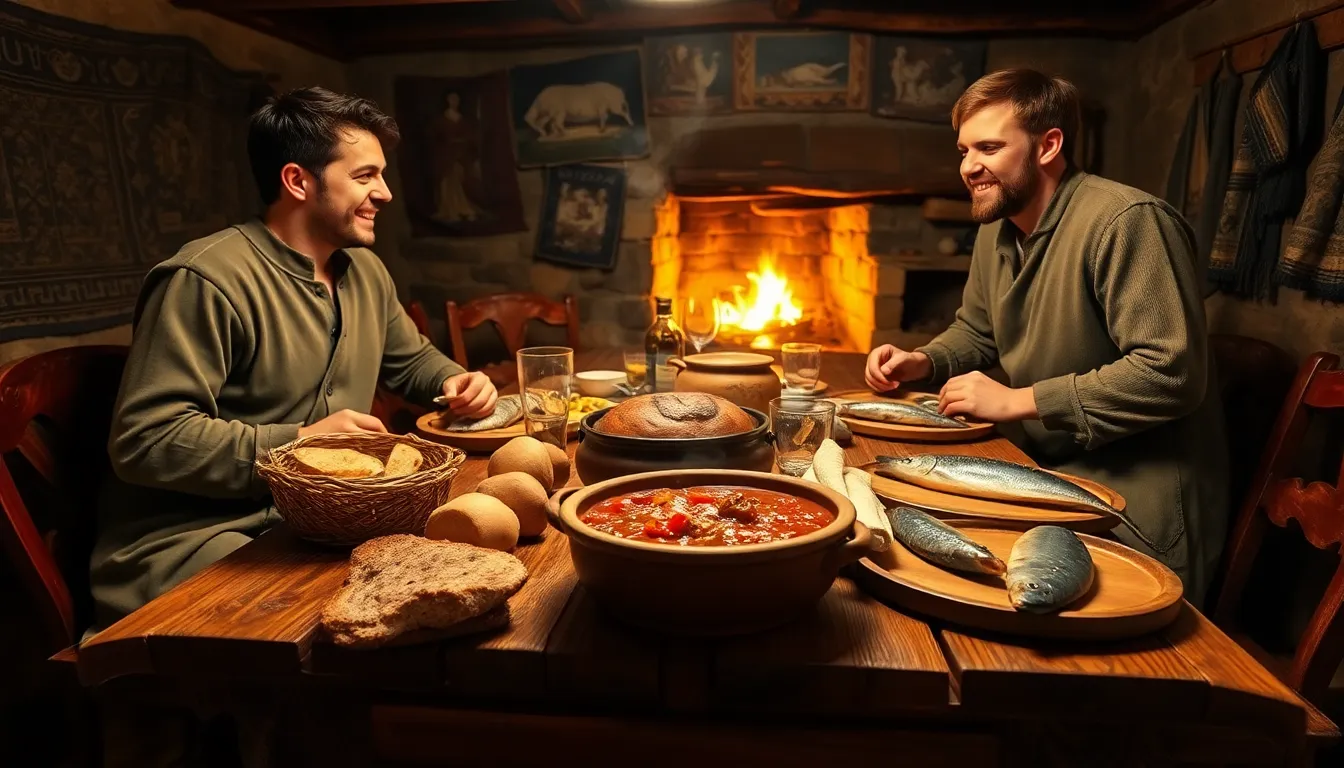When you think of medieval travel, images of knights battling dragons might flood your mind, but what about the food? Yes, the food. In an age without 24-hour gourmet delivery services, travelers had to carry their meals, and trust us, it wasn’t all bread and water. Medieval travel food was a culinary adventure of its own. From mouthwatering stews to the art of preserving meats, join us as we unveil the edible history of those who roamed the world long before cell phones and fast food existed.
Table of Contents
ToggleThe Importance Of Food In Medieval Travel

Food played a crucial role in medieval travel, serving as sustenance, comfort, and sometimes even a status symbol. For people traversing rough terrains, the right food could mean the difference between survival and starvation. Travelers often relied on specific foods that were portable and long-lasting.
Consider the traveler setting out on a long journey: their success depended on the food they packed. Stale bread might not sound appealing, but it was a staple for good reason. It lasted a long time without spoiling, providing the necessary calories to fuel long days on horseback. Also, some foods were seen as luxurious, so sharing these delicacies indicated wealth and status. Think about how someone might break out a sweet dried fruit or spiced meat as they camped for the night, instantly elevating the experience from mundane to memorable. This travel food culture was more than mere sustenance: it fostered camaraderie and showcased regional pride.
Historical Context Of Travel During Medieval Times
Travel during the medieval period was not for the faint of heart. With limited infrastructure and creeping crime rates, embarking on a journey required significant courage. Most people moved for trade, pilgrimage, or even war, and the roads were often perilous.
The vast network of trade routes generated a tapestry of food interaction. Of course, what one relieved traveler experienced in Italy would differ drastically from the fare of those in a Germanic forest. For example, while spices like pepper and cinnamon made their way from the East into European kitchens, local ingredients dictated what could actually be made. It was a culinary game of adaptation as each traveler blended their available supplies with the regional dishes they encountered. So, the food of medieval travel became a melting pot of flavors and cultural influences.
Common Types Of Food Consumed By Travelers
Travelers in medieval times encountered a range of foods that varied by region and occasion. Here’s a closer look at what they dug into during their lengthy escapades.
Preservation Techniques For Travel Food
To ensure their food lasted the distance, travelers relied on a variety of preservation techniques. Salting meats was common because it not only added flavor but also prevented spoilage. Smoked fish was another favorite, allowing it to be brought along without fear of decay.
Dried fruits and vegetables also made the cut, giving travelers a necessary vitamin fix. It’s fascinating how ingenious these methods were, considering the limited technology available. Carrying fresh produce often proved impractical: hence, pickling was the next best option, allowing travelers to enjoy veggies with a satisfying crunch.
Common Ingredients In Medieval Travel Meals
Moving on to meals themselves, grains formed the backbone of medieval diets. Barley and oats were commonly consumed, often turned into porridge or bread. Meat was more of a luxury for travelers, but when on the go, poultry like chicken was a convenient choice. Fish, hailing from coastal routes, filled the gaps left by scarce livestock. Seasonings such as salt and herbs heightened the simple flavors, while recipes varied widely based on local availability.
Regional Variations In Travel Food
Travel food in medieval Europe was a true reflection of the local environment, regional resources, and culinary traditions.
Challenges And Considerations For Travelers
Travelers had to navigate not only the geography but also the economic landscape of their journey. In some areas, food was plentiful, while in others, finding a decent meal became a challenge. Whether it was crossing the harsh Alps or trudging through the plains of England, the varied accessibility to food sources dictated what could be found.
Local customs also factored into the equation: some places thrived on dairy and grains, while others were rich in fish and spices. So, travelers adapted their diets based on what was available. These variations made for a fascinating culinary patchwork, ensuring that a journey through medieval Europe was as much about eating differently as it was about the sights.
Role Of Inns And Hostels In Food Availability
The inns and hostels of medieval Europe served as vital lifelines for weary travelers. Not only did these establishments provide shelter, but they also offered the chance to experience local cuisine.
Culinary Practices And Innovations During Travel
Staying at an inn, travelers often found themselves at the mercy of the cook’s whims. Meals varied widely, based not just on seasonality but on local specialties. An innkeeper might choose to prepare a hearty stew full of local game one night and a simple dish of boiled potatoes the next.
Inn kitchens were often community hubs, bringing together ingredients from various travelers, from precious spices to local meads. This diversity of meals reflects how the culinary evolution of a region was influenced by the movement of people, forging a unique blend that travelers would remember long after their journeys ended.





